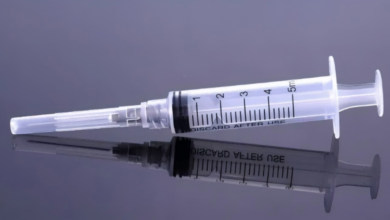How Long to Leave Pimple Patch On: Dermatologist-Approved Advice

If you’ve ever wondered how long to leave pimple patch on for maximum effectiveness, you’re not alone. These small yet powerful skincare tools can speed up acne healing, but only when used correctly. Dermatologists emphasize that timing plays a crucial role in how well pimple patches work to absorb impurities, protect against bacteria, and reduce inflammation. In this article, we’ll share dermatologist-approved advice on the proper duration, best practices, and common mistakes to avoid when using pimple patches for clear, healthy skin.
What Is a Pimple Patch and How It Works
A pimple patch is a small, adhesive sticker designed to target acne directly. Most patches are made from hydrocolloid material, which is also used in medical bandages to draw out fluid and protect wounds.
How it works:
- Absorbs impurities: The patch pulls out pus, oil, and other fluids from your blemish, helping it shrink faster.
- Protects your skin: It acts as a barrier against dirt, bacteria, and your fingers, reducing the risk of infection and scarring.
- Promotes healing: By keeping the area moist and covered, it creates a healing environment that reduces redness and irritation.
Pimple patches are usually thin, clear, and discreet, making them suitable for daytime or overnight use. They provide a simple, hygienic way to treat pimples without picking or squeezing.
Recommended Duration
For best results, leave a pimple patch on for 8–12 hours. This is usually ideal for overnight use or during a period when your skin won’t be disturbed.
- Small pimples or whiteheads: Leaving the patch on for 6–8 hours is usually enough for it to absorb fluid and start flattening the blemish.
- Larger or inflamed pimples: These may need up to 12 hours so the patch can fully absorb pus, oil, and fluid, while also helping to reduce swelling and inflammation.
The patch is ready to remove when it turns white or cloudy, indicating it has absorbed pus, oil, and impurities. Leaving it on too short or too long can reduce effectiveness or irritate your skin.
Signs It’s Time to Remove or Replace
Knowing when to remove or replace your pimple patch is key to keeping it effective and protecting your skin. Watch for these signs:
- The patch turns white or cloudy
This is a sign that the patch has absorbed pus, oil, and fluid from your pimple. It means the patch has done its job and should be removed.
- The edges start lifting or peeling
Once the patch loses its seal, it can no longer protect the pimple or pull out impurities effectively. It’s time to replace it with a fresh patch if needed.
- The recommended time has passed
Most patches work best for 8–12 hours. Leaving it on longer may reduce its effectiveness or irritate your skin.
- The blemish is still active
If the pimple hasn’t fully flattened or is still inflamed, clean the area gently and apply a new patch to continue treatment.
- You notice irritation or itching
If the patch feels uncomfortable, itchy, or causes redness, remove it immediately. Your skin may be sensitive to the adhesive or ingredients.
Following these signs ensures your pimple patch works effectively without harming your skin.
Risks of Leaving a Patch On Too Long
It’s easy to forget a pimple patch when you’re busy, but leaving it on too long can cause issues. Here’s why:
- Reduced Effectiveness
Pimple patches can only absorb a certain amount of pus, oil, and impurities. Most patches become fully saturated after 8–12 hours and won’t absorb anything more. Leaving a spent patch on won’t help your blemish, so it’s better to replace it with a fresh one if needed.
- Skin Irritation
Keeping a patch on too long keeps the skin underneath soft and overly moist. Prolonged exposure can weaken the skin’s barrier, cause redness or irritation, and in some cases trigger new breakouts around the edges of the patch.
- Risk of Bacteria Build-Up
Once a patch has absorbed impurities, it can become a breeding ground for bacteria. Leaving it on longer than recommended traps bacteria on your skin, which can worsen acne rather than help it.
Tips for Safe Use
- Apply patches before bed or during a quiet period to avoid forgetting them.
- Set a reminder to remove or replace the patch after the recommended 8–12 hours.
- Always use a fresh patch if your blemish still needs treatment.
Following these guidelines ensures your pimple patch works effectively, keeps your skin safe, and helps your blemishes heal faster.
See also: Unlocking the Power of Hydrogen for Health and Wellness
Step-by-Step Usage
Step 1: Clean Your Skin
Wash your face gently with a mild cleanser and pat it dry. The pimple area must be completely clean and dry so the patch can work effectively.
Step 2: Apply the Patch
Carefully peel the patch from its backing. Place it directly over the pimple, making sure it covers the spot completely. Press down the edges lightly so it seals to your skin.
Step 3: Leave It On
Keep the patch on for 8–12 hours, depending on the size and severity of the pimple. Using it overnight usually works best, giving the patch enough time to absorb fluids and protect the spot.
Step 4: Check the Patch
Remove the patch when it turns white or cloudy, which means it has absorbed pus, oil, and impurities from the blemish.
Step 5: Dispose and Repeat if Needed
Throw away the used patch. If the pimple is still visible or inflamed, you can apply a fresh patch to continue treatment.
Step 6: Follow-Up Skincare
After removing the patch, continue your normal skincare routine. Avoid harsh scrubs or strong treatments directly on the treated area to prevent irritation.
This simple routine helps pimples heal faster while protecting your skin from bacteria and irritation.
Common Mistakes to Avoid
- Applying on Wet or Oily Skin
Patches stick best to clean, dry skin. If your skin is damp or oily, the patch may slip or not stick, making it less effective at absorbing pus and oil. Always wash and pat dry before use.
- Leaving It On Too Short or Too Long
- Too short: The patch won’t fully draw out impurities, so healing is slower.
- Too long: Can irritate skin, keep it too moist, and trap bacteria, which may make pimples worse.
- Layering Over Skincare Products
Applying a pimple patch over lotions, oils, serums, or other skincare products can stop it from sticking properly. If the patch doesn’t seal to your skin, it can’t absorb impurities or protect your pimple effectively.
- Reusing Patches
Pimple patches are designed for one-time use only. Reusing a patch can transfer bacteria and impurities back onto your skin, which may worsen acne or cause irritation.
Following these tips helps your pimple patch work better, protects your skin, and heals pimples faster.



